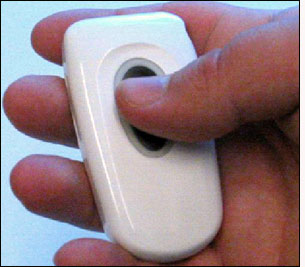Sep 24, 2010Researchers at Finland's Tampere University of Technology (TUT) have developed a low-latency wireless sensor network that is currently being used to improve the security of personnel in a psychiatric ward at Kainuu Central Hospital, in the city of Kajaani. The network was designed at the university, and the security application for wireless alarming, requested by the hospital, was implemented with the low-latency network in the spring and summer of 2009.
According to the designers, the network is one of the first to feature multi-hop, low-delay data transfer and energy-efficient mobile tags with a battery that can last for approximately one to two years, depending on usage levels. The network devices, which operate at 2.4 GHz, use proprietary data transfer and wireless communications protocols developed at TUT. The protocols, the designers report, are optimized for robust and reliable operation.
The system consists of battery-powered tags, as well as routers that receive signals from those tags. The routers form a wireless multi-hop network that forwards the tag data to gateways that then transfer the information to a system server. All of the hardware—comprising standard off-the-shelf components, such as microcontrollers and radio chips—was developed at TUT.
Ville Kaseva, a TUT researcher working on the project, notes that sensors can be added to the network devices so that a variety of parameters can be measured and monitored via the network.
"Usually, wireless sensor networks are built to conserve energy for all network devices, which are battery-operated," Kaseva explains. "With the system we designed, routers are plugged into an electricity source and are active almost all the time, to allow for quick data transfer through multiple wireless hops."
At Kainuu Central Hospital, personnel are using the network with specially designed tags to alert supervisors if they are in a threatening situation in the ward. The palm-sized, battery-powered tags include a button that an employee can push if he or she needs help, causing the tag to transmit an alarm signal encoded with a unique serial number that identifies the individual to whom the tag was issued. The device's signal is transmitted to all routers in the vicinity, for reliability and positioning purposes. A single device's range can be as long as 25 meters (82 feet) indoors. The network set up at the facility covers 1,300 square meters (13,993 square feet) and includes a total of 50 static devices acting as routers or gateways, as well as 12 mobile tags used as alarming devices.
Along with the Kainuu Central Hospital deployment, the researchers say they have conducted more than 20 pilots in various other applications, including environmental measurements, building automation, transport and logistics. The mobile tags come with a built-in accelerometer, and are available with a variety of other sensors. Currently, sensors used in pilots include those that measure humidity, voltage, sound waves and airflow. Motion detectors (piezoelectric and passive infrared) are also in use.
The largest single network, deployed on TUT's campus in 2008, covers several buildings and utilizes 350 sensor nodes acting as routers and measurement tags. The nodes measure various building-automation conditions—such as temperature, luminance, humidity, carbon dioxide and room-usage activity—via motion detectors.
According to Kaseva, the main benefits of the network are the continuous monitoring of employees' locations and selected measurements, short delays for data transfer, reliable operation and low interference—given the system's small transmission power of 1 milliwatt, versus 100 milliwatts for typical routers used in Wi-Fi networks. In addition, he says, the system is easy to install and can be extended by simply adding new devices to desired locations.
This fall, at the request of a hospital in Tampere, Kaseva and his colleagues intend to test the use of temperature-sensing tags on patients, for continuous, remote monitoring of patients' whereabouts in the ward, as well as their body temperatures.
"We are working together with the hospital's research group to determine what other physiological parameters to measure, and how to measure them," Kaseva states.
TUT has created a spin-off company, Wirepas Ltd., that is working to sell the technology. The firm has launched two commercial versions of the system for personnel and asset management, as well as for building monitoring.


